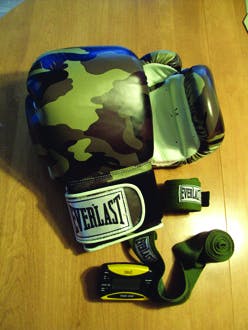The power of life and death: how many occupations carry that kind of decision making? Doctors? Nurses? Theirs is not so much a decision to take a life as much as it is their duty to save one. Doctors don’t kill people, rather, they heal. I’m not so cavalier or misguided to think cops walk around picking out people who need killing, but the truth is every once in a while we must make a life or death decision by using our firearm to stop a threat. Sometimes that decision results in someone dying. However, we most often resort to putting our hands on people, rather than shooting them. We tussle with bad guys, try to control them with certain techniques, and at times even resort to fisticuffs.
My three decades in law enforcement taught me the likelihood of being involved in a fight is very high, particularly if you’re a cop who is proactive. Cops who make street stops and otherwise throw a wrench in bad guys’ plans are often rewarded with a fool who wants to mix it up. It’s a fact of life that when someone says, “I’m not goin’ anywhere,” he means it. Get ready to rumble.
One of the best ways to prepare for that moment is to regularly work out with a heavy bag. Whether you hang one in your basement or garage, or use one at your gym, it’s one of the best and most appropriate workouts a cop can include in his tool bag. Heavy bag workouts are important for men and women; bad guys do not discriminate—they will sucker punch any cop regardless of sex, size, or circumstance.
Why work out with a heavy bag? To begin with, what could be more germane to what we do than defend ourselves in a fight. We interact, in large measure, with societal misfits. People who don’t like to follow rules tend to be non-cooperative and don’t hesitate to take a swing at cops. Working with a heavy bag will build stamina and punching power. Remember, most street fights only last five or ten seconds. It’s not like watching a boxing match. You have a narrow window in which to throw a punch that’s accurate and powerful. And even that ten second increment of time can tire you if you aren’t in shape.
I recently spoke with Chris Manuel who owns Team Manuel Karate & Kickboxing Gym in Fredericksburg, Virginia. Chris is a former police officer who grew up around boxing and fighters. His Father taught boxing at the Marine Corps base in Quantico, Virginia, and Chris followed in his Dad’s footsteps, becoming an amateur boxer and kick boxer. Chris eventually turned pro and competed in boxing, kick boxing, and MMA fighting.
“Police officers will benefit from working out three days a week on the heavy bag,” said Chris. “It’s a routine that is intense, one that builds punching power and strength, both of which cops need on the job.” He went on to say that bag workouts are particularly valuable when one does not have the luxury of being able to work out for long periods of time. “A twenty to thirty minute workout hitting a heavy bag will accomplish as much as someone who puts in an hour work out with weights. It’s a total body exercise and a great core strengthener.” Chris and I discussed an ideal heavy bag work out might for a beginner. We agreed it was important to develop punching skill and strength; the workout below addresses those two points for the novice.
Before you begin, a word about what you will need. Equipment is simple: hand wraps, boxing gloves, and some type of timer. I use an Everlast timer which also has a bell that sounds to signal the beginning and end of each round. These three items can be purchased for less than $50 online or at any sporting goods store. If there’s a clock with a second hand hanging near the heavy bag you can use that instead. Keeping track of time is important; the rounds will be 2 minutes long with a 1 minute rest in between. That’s a total of only 15 minutes, but if you are making the most of each 2 minute round, that 15 minutes will more than suffice.
Begin by warming up your shoulders: small arm circles forward and backward, eventually ending with big circles. Throw in some torso twists, and if you’re coordinated enough, a few minutes of jumping rope will get your heart rate up.
Round One
This will serve as both a warm up and skill builder. Practice your punches and combinations, crosses, hooks and jabs. Work on lining up your shots and footwork. Move left to right and right to left, practice feints and moving your head. Keep your hands up; don’t drop them to your side. Punches need not be heavy, movement and coordination with your punches is the goal for this round.
Round Two
Here’s where we increase the intensity by throwing straight stiff shots. Get your body behind each punch and strike with power. Each combination you throw should be strong.
Round Three
Mix it up for this round, alternating between soft and hard combinations. Also practice throwing hard body shots.
Round Four
This round will consists of combinations, all of which will be hard shots. No letting up this round, no easy jabs.
Round Five
This is for all the marbles, every punch you throw should be a bomb. Each punch is a knockout punch. By the end of this round your arms should feel like tree trunks—too heavy to even hold up.
At this point take the gloves and wraps off and cool down for a few minutes. The easiest cool down is simply walking, allowing the heart rate to come down gradually. A couple of things worth mentioning: first, how to throw punches. In law enforcement it’s important to stay close to your opponent. That means your punches should be short and come from inside. Haymakers, where your swing starts from behind your shoulder and you wind up like you’re pitching a baseball, only works in the movies. Never telegraph your punches. By the time your punch is delivered, the bad guy will have hit you 2 or 3 times. The other important aspect of staying in close is that you don’t allow the person you’re fighting to use all of his strength. And unless he’s practiced on a heavy bag like you, his short inside punches will be mostly ineffective.
After 4 – 6 weeks using this routine you will notice both your stamina and punching power increasing. You will want to kick it up a notch and you can do so by adding some intensity for the last 15 – 20 seconds of any or all rounds. Another way to step up to a higher level is to add 1 or 2 additional one minute rounds of punch-out drills, also known as an Olympic drill. It consists of rapid straight punches without any rest. The non-stop nature of this drill will make anyone arm weary in a hurry.
Heavy bag work outs are job specific. This type of exercise is an activity that will help you, physically and mentally, when facing that guy or gal who insists on trying to duke it out with a cop. Heavy bag training in this context is not meant to turn you into a boxer, rather it is an activity to develop your punching skill, power, and confidence, which translates into making you better prepared to defend yourself and your colleagues on the street.
Stay safe, Brothers and Sisters!
Web Links:
- LivSafe--Stay Aware, Stay Safe!
- Chicago Warriors Midnight Battles in the Windy City by John Wills
- Gripped By Fear by John Wills
About The Author:
John M. Wills spent 33 years in law enforcement as a Chicago Police Officer and FBI Special Agent (Ret). He is a Freelance Writer and Speaker whose third book, TARGETED, is now available online at Amazon and Barnes & Noble. Contact John through his website: www.johnmwills.com.

John Wills
John M. Wills is a former Chicago police officer and retired FBI agent. He is a freelance writer and award-winning author in a variety of genres, including novels, short stories and poetry. John also writes book reviews for the New York Journal of Books, and is a member of the National Book Critics Circle. His new book, The Year Without Christmas, is available now. Visit John at: www.johnmwills.com.



